- Home
- Prelims
- Mains
- Current Affairs
- Study Materials
- Test Series
 EDITORIALS & ARTICLES
EDITORIALS & ARTICLES
Jan 28, 2022
NATIONAL GIRL CHILD DAY: KNOW ABOUT THE HISTORY & SIGNIFICANCE OF THE AUSPICIOUS DAY
Ever since 2008, the date of January 24 is celebrated as the National Girl Child Day in India every year.
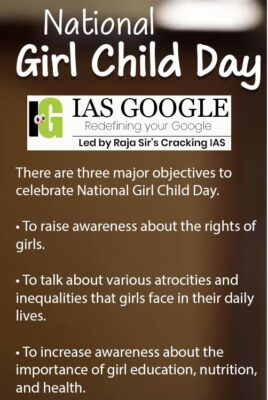
 Government Initiatives for Girl Child:
Beti Bachao Beti Padhao:
Government Initiatives for Girl Child:
Beti Bachao Beti Padhao:
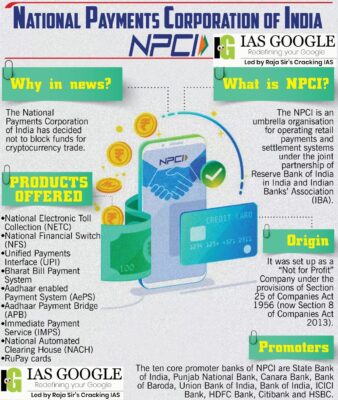 National Payments Corporation of India (NPCI)
National Payments Corporation of India (NPCI)
 Amended guideline
Amended guideline
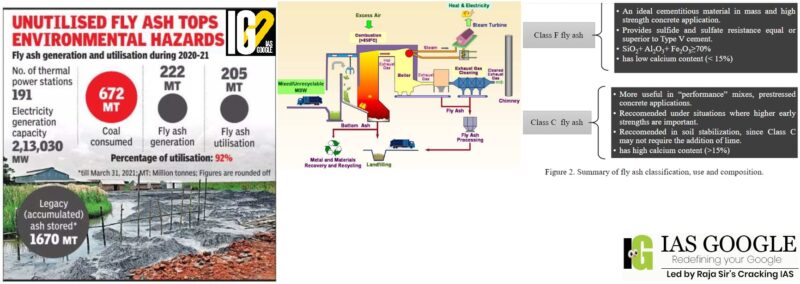 Genesis:
Genesis:
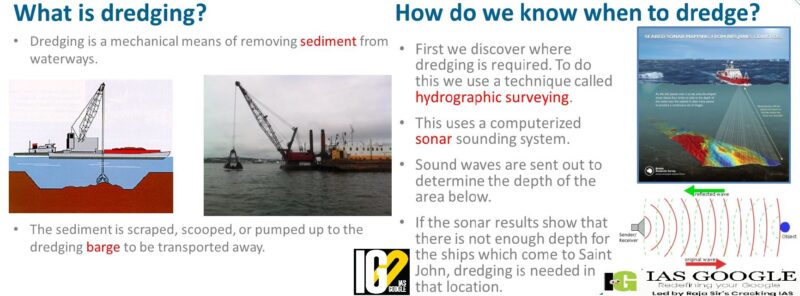 Dredging:
Dredging:
 Urban fire vulnerabilities
General Causes of Fires
Urban fire vulnerabilities
General Causes of Fires
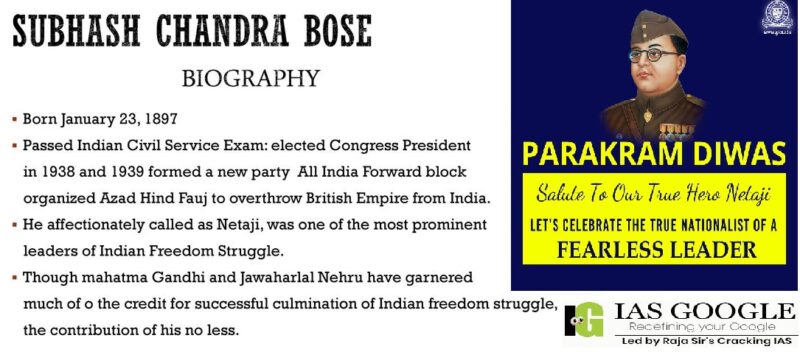 Subhash Chandra Bose:
Subhash Chandra Bose:
 Solar flare
Solar flare
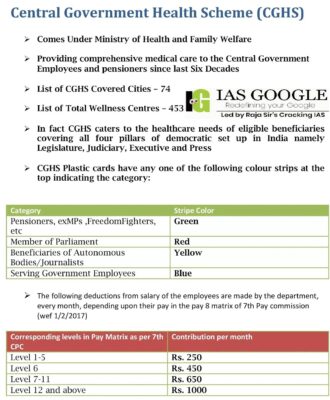 The launch of the revamped CGHS website linked with a mobile app is an important and timely step towards catering to India’s increasing digital penetration.
The launch of the revamped CGHS website linked with a mobile app is an important and timely step towards catering to India’s increasing digital penetration.
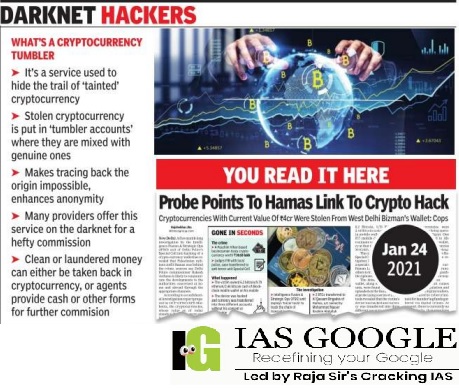
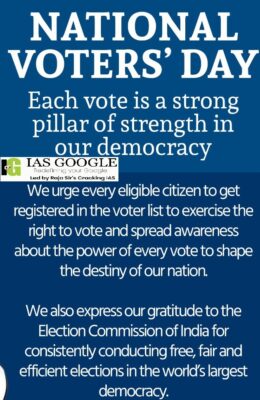
 Key Changes
Key Changes
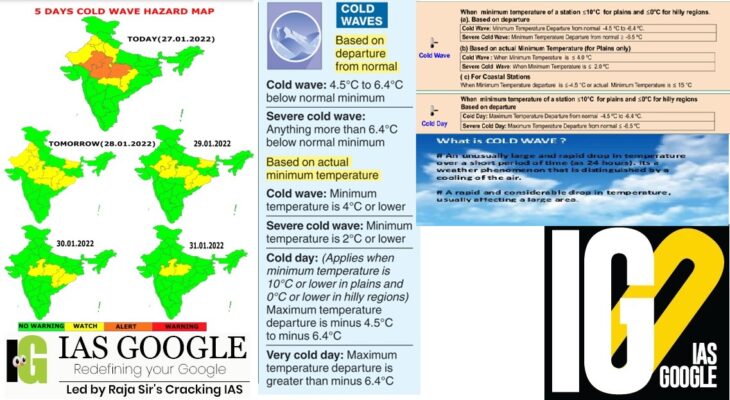 What is a cold wave?
What is a cold wave?

 Government Initiatives for Girl Child:
Beti Bachao Beti Padhao:
Government Initiatives for Girl Child:
Beti Bachao Beti Padhao:
- It is a tri-ministerial scheme with the Women and Child Development Ministry as the nodal ministry.
- The other two ministries involved are Health and Family Welfare and Education (Department of School Education and Literacy).
- It is a 100 percent Centrally Sponsored Scheme.
- The programme is being implemented across 405 districts in the country.
- To save the child from social problems such as gender-based abortions and advance child education
- To address sex selective abortion and the decline in Child Sex Ratio.
- To endorse the right of girls to inherit property.
- Sukanya Samriddhi Yojana Account is a Government of India backed savings scheme designed for parents of girl children.
- Allow parents to set up trust for their child's eventual schooling and marriage expenses.
- All parents and guardians of girl children under the age of 10 can open this account.
- The Mukhyamantri Rajshri Yojana was launched in Rajasthan.
- Objective: To offer monetary benefits to parents of girl children, starting from their birth till their higher education.
- The CBSE Udaan scheme for girls is implemented by the Central Board of Secondary Education, under the Ministry of Human Resources Development, Government of India.
- Objective: To increase the student enrolment of girls in prestigious engineering and technical colleges across India.
- According to last census statistics, the child sex ratio of girls to boys (0-6 years) declined to 919 girls per 1,000 boys from 927 girls per 1,000 boys in 2001.
- The adverse sex ratio is the culmination of a conservative way of thinking that households do not want to give birth to a daughter and nurture her to achieve her abilities.
- Even before the child is conceived, a ‘Girl Child’ faces discrimination.
- Female infanticide is a disturbing phenomenon in India, as low-cost abortion technology enables households to exercise their choice for boys over daughters.
- Right after birth, the infant faces bigotry and injustice.
- She is not provided with adequate meals compared to her male siblings; her education is not given much priority.
- And in many instances, parents want their sons to resume schooling, and wish their daughters to sit at home and do household work.
 National Payments Corporation of India (NPCI)
National Payments Corporation of India (NPCI)
- It is an initiative of the Reserve Bank of India (RBI) and Indian Banks’ Association (IBA).
- It is an umbrella organisation for operating retail payments and settlement systems in India.
- Launch 2008.
- NPCI has ten core promoter banks: State Bank of India, Punjab National Bank, Bank of Baroda, Canara Bank, Bank of India, HDFC Bank, Citibank, HSBC, and ICICI Bank.
- It is a non-profit organisation set up under the provisions of Section 25 of Companies Act, 1956 (now, Section 8 of Companies Act, 2013).
- Aim: To provide infrastructure to the whole banking industry, both physical and electronic payment and settlements system.
- The main objective of NPCI is to consolidate, combine, and integrate multiple systems for payment with different service levels into one nationwide standard uniform and business process for all the retail payment transactions.
- It is set up under the guide lance and support of the central bank RBI and the Indian Banks Association.
- To design and facilitate an affordable payment process or mechanism so that the common man who makes retail payments on a day-to-day basis benefit from the process by saving the cost and time.
- It exists in designing and implementing a nationwide mechanism that is affordable for retailers to use on a day-to-day basis without losing credibility and making sure the same process is standardized across the country.
- National Financial Switch (NFS)
- Immediate Payment Service (IMPS)
- Aadhaar-enabled Payment Service (AePS)
- Cheque Truncation System (CTS)
- National Automated Clearing House (NACH)
- Unified Payments Interface (UPI)
- National Electronic Toll Collection (NETC)
 Amended guideline
Amended guideline
- It envisages granting up to 100% of the cost of agriculture drone or Rs. 10 lakhs, whichever is less, as grant for purchase of drones.
- These grants will be given to the Farm Machinery Training & Testing Institutes, ICAR (Indian Council of Agricultural Research) institutes, Krishi Vigyan Kendras and State Agriculture Universities for taking up large scale demonstrations of this technology on the farmers’ fields.
- The Farmers Producers Organizations (FPOs) would be eligible to receive grant up to 75% of the cost of agriculture drone for its demonstrations on the farmers’ fields.
- A contingency expenditure of Rs.6000 per hectare would be provided to implementing agencies that do not want to purchase drones but will hire drones.
- The contingent expenditure to implementing agencies that purchase drones for drone demonstrations would be limited to Rs.3000 per hectare.
- It was launched by the Ministry of Agriculture and Farmers Welfare.
- Increasing the reach of farm mechanization to small and marginal farmers and to the regions where availability of farm power is low.
- Promoting ‘Custom Hiring Centres’ to offset the adverse economies of scale arising due to small landholding and high cost of individual ownership.
- Creating hubs for hi-tech & high value farm equipment’s.
- Creating awareness among stakeholders through demonstration and capacity building activities.
- Ensuring performance testing and certification at designated testing centers located all over the country.
- Conduct performance testing for various farm machinery and equipment's at the four Farm Machinery Training and Testing Institutes (FMTTIs), designated State Agricultural Universities (SAUs) and ICAR institutions;
- Promote farm mechanization among stakeholders by way of on-field and off-field training and demonstrations.
- Provide financial assistance to farmers for procurement of farm machinery and implements
- Establish custom hiring centres of location and crop specific farm machinery and implements
- Mechanized agriculture is the process of using agricultural machinery to mechanize the work of agriculture, greatly increasing farm worker productivity.
- The overall level of farm mechanization in the country is only 40-45% and 90% of the total farm power is contributed by mechanical and electrical power sources.
- NGT directed center for scientific management and utilization of remains of burnt coal.
- It has also asked us to take adequate action against non-compliant power plants.
 Genesis:
Genesis:
- coal-based thermal power plants (TPPs), which generate electricity, also produce wastes or By-products such as Fly ash and Bottom Ash.
- Since 1999 Union Environment ministry had directed the use of fly ash and mandated a target date for all thermal power plants to comply by ensuring 100% utilization. But still, it is not fully implemented.
- When Coal is burnt in the furnace, it produces ash particles. These ash particles cannot be disposed of openly because they have hazardous elements like Sulphur, Mercury, Aluminium, chromium, selenium, lead, radioactive materials (Uranium, Thorium), etc.
- Ash particles which are heavy in nature and could not fly away, and hence stored at the bottom, are called Bottom ash.
- Ash particles that are not heavy in nature and could fly away that are captured and stored, so-called Fly ash.
- Due to its non-heaviness, fly ash is very fine in nature.
- Commonly it has been seen disposing openly and resulting in environmental pollution. Mainly air and water bodies get contaminated due to it.
- Cement-based products, such as poured concrete, concrete block,
- brick, Portland cement concrete, Asphalt concrete,
- in geopolymers, Mineral extraction, Waste treatment, and stabilization
- can be used as fertilizer Soil stabilization
- used as embankment and mine fill
- can be used in Highway development etc.,
 Dredging:
Dredging:
- It is the removal of sediments and debris from the bottom of lakes, rivers, harbours, and other water bodies.
- It can involve excavation of man-made debris such as rocks, bottom sediments, construction debris, and refuse, and plant or animal matter on the bottom of either shallow seawater or freshwaters.
- Maintenance dredging is of huge importance in coastal regions which have large tidal activity and in water bodies that are susceptible to becoming silted with sediments, sand and mud.
- The Lowlands of Netherlands and Flanders are the best example of such regions which require regular maintenance dredging.
- It helps in safer voyages by pacifying underwater traffic and by maintaining proper bottom clearance
- Dredging is also important to make the marine ecosystem pollution-free.
- It helps in the eco-friendly disposal of deposited polluting toxicants and harmful materials.
- It is a primary requirement to channelize the construction of a network of bridges, dams or other civil engineering works in water.
- Dredging of streams lowers the surrounding water table and dries up adjacent wetland.
- Dredging impacts marine organisms negatively through entrainment, habitat degradation, noise, remobilization of contaminants, sedimentation, and increases in suspended sediment concentrations.
- It is Indian Government Mini Ratna undertaking, established in 1976.
- It reports to the Ministry of Shipping and is headquartered at Visakhapatnam.
- It is involved in maintenance dredging, capital dredging, beach nourishment, land reclamation, shallow water dredging, Project Management consultancy and Marine construction.
- It also occasionally dredges at foreign seaports in countries such as Sri Lanka, Taiwan and Dubai.
 Urban fire vulnerabilities
General Causes of Fires
Urban fire vulnerabilities
General Causes of Fires
- Faulty appliances and leads: Faulty equipment and weak wiring cause large number of fires in homes, offices and other establishments.
- Faulty fuel supply/leak: Leakage in gas/fuel supply lines cause fires which prove to be difficult to subdue.
- Misuse of equipment or appliances: Unattended cooking utensils, use of flammable materials for interiors and furniture are major causes of fire outbreaks.
- Human error/arson: Human actions like smoking, negligent actions like overcharging and overheating of electrical appliances, lack of knowledge of correct procedures for use of flammable materials.
- Unplanned urbanization:
- The high density of urban settlements resulting in narrow and constricted circulation spaces adds to the urban fire vulnerabilities.
- Tightly packed dwelling units in slums and squatter settlements are high risk areas in cities.
- It covers the requirements for fire prevention, life safety in relation to fire and fire protection of buildings.
- It specifies:
- The demarcations of fire zones, restrictions on construction of buildings in each fire zone.
- Classifications of buildings based on occupancy, types of building construction according to fire resistance of the structural and non-structural components.
- Fire prevention:
- This covers aspects of fire prevention pertaining to the design and construction of buildings.
- It also describes the various types of buildings materials and their fire rating.
- Life Safety:
- This covers life safety provisions in the event of fire and similar emergencies.
- It addresses construction and occupancy features that are necessary to minimize danger to life from fire, smoke, fumes or panic.
- Fire Protection: Covers significant appurtenances (accessories) and their related components and guidelines for selecting the correct type of equipment and installations meant for fire protection of the building, depending upon the classifications and type of building.
- It was developed by the Ministry of Housing and urban development.
- It Includes Prevention measures against “Soft Storeys” in multi-storeyed buildings and Proof Checking of Structural Design for buildings.
 Subhash Chandra Bose:
Subhash Chandra Bose:
- Born on: 23 January 1897, Cuttack
- He studied at Presidency College, Calcutta (Kolkata), from which he was expelled in 1916 for nationalist activities.
- He went University of Cambridge in England to prepare for the Indian Civil Service.
- In 1920 he passed the civil service examination, but he resigned his candidacy.
- He was highly influenced by Vivekananda's teachings and considered him as his spiritual Guru.
- His political guru was Chittaranjan Das.
- He participated in the non-cooperation movement.
- He was arrested for his political activities in 1924.
- He became a youth educator and commandant of the Bengal Congress volunteers.
- In 1924, he became the CEO of the Calcutta Municipal Corporation.
- In 1930 he was elected Mayor of Calcutta.
- He won the Congress presidential election at Haripura 1938.
- He was one of India’s greatest freedom fighters.
- He started the newspaper 'Swaraj'.
- He founded a new party, 'The Forward Bloc'.
- He organised the Indian National Army (INA) to fight the British and to liberate India with the help of Japan.
- He gave the famous slogans 'Jai Hind', 'Dilli Chalo' and “Give me blood and I will give you freedom”.
- He also wrote the book ‘The Indian Struggle’ which covers the details of Indian independence movement from 1920 to 1942.
- He died on 18th August 1945.
 Solar flare
Solar flare
- Flare is defined as a sudden, rapid, and intense variation in brightness.
- A solar flare is an intense eruption of electromagnetic radiation in the Sun's atmosphere.
- It occurs when magnetic energy that has built up in the solar atmosphere is suddenly released.
- Flares happen in active regions and are often, but not always, accompanied by coronal mass ejections, solar particle events, and other solar phenomena.
- Solar Flares occur when accelerated charged particles, mainly electrons, interact with the plasma medium.
- The phenomenon of magnetic reconnection leads to this extreme acceleration of charged particles.
- The modern classification system for solar flares uses the letters A, B, C, M, or X, according to the peak flux in watts per square meter of soft X-rays with wavelengths 0.1 to 0.8 nanometers.
- The biggest flares are known as X-class flares.
- The smallest ones are A-class, followed by B, C and M.
- C-class and smaller flares are too weak to noticeably affect Earth.
- M-class flares can cause brief radio blackouts at the poles and minor radiation storms that might endanger astronauts.
- B-class comes in the lowest class of solar flares.
 The launch of the revamped CGHS website linked with a mobile app is an important and timely step towards catering to India’s increasing digital penetration.
The launch of the revamped CGHS website linked with a mobile app is an important and timely step towards catering to India’s increasing digital penetration.
- The website has several updated features which shall hugely benefit more than 40 lakhs beneficiaries with real-time information from the convenience of their homes.
- Basket of services is enlarged with the revamped website, which adds on a newly provided feature of teleconsultation.
- It is an 'easy-to-use device', that will help in identifying new drugs and better understanding natural and human-designed nanotechnologies.
- It is a five-nanometer long DNA antenna fitted with fluorescent ends.
- This nanoantenna has been designed to monitor the motions of proteins.
- It observes the structural change of proteins over time.
- The design of this device is inspired by the ‘Lego-like’ properties of DNA.

- It is a service offered to mix potentially identifiable or "tainted" cryptocurrency funds with others, so as to obscure the trail back to the fund's original source.
- This is usually done by pooling together source funds from multiple inputs for a large and random period of time, and then spitting them back out to destination addresses.
- It has arisen to improve the anonymity of cryptocurrencies, usually bitcoin, since the currencies provide a public ledger of all transactions.

- The first-ever National Voters’ Day was celebrated on January 25, 2011.
- Objective: To encourage more young voters to take part in the electoral process.
- The theme for National Voters' Day 2022 is ‘Making Elections Inclusive, Accessible and Participative’.
- In states with comparatively lower levels of development and prevalence of poverty, need based freebies can become a source of their development and usher growth.
- An increase in subsidies on non-merit goods such as freebies is going to make the fiscal deficit of any government unsustainable.
- The freebies are funded from the state exchequer and eventually put it into disarray.
- Rational debates that should happen, does not happen in the case of distribution of last-minute freebies as it is done in haste without legislative debate.
- Freebies of any kind, undoubtedly, influence all people. It shakes the root of free and fair elections to a large degree.
- The Supreme Court upheld the distribution of freebies and it also held that it does not amount to a corrupt practice.
- If the candidate of a political party promises the same gift, it would not be so, because that promise was not made by him, but the inducement comes from the party.
- The court said that the freebies were administered through district collectors and there were sufficient checks, because government expenditure is subjected to audit by the CAG.
- If an independent candidate wants to give freebies, it would be a corrupt practice.
- There is a need to make the bureaucracy and police independent.
- There is also a need to create a statutory, independent police commission, along the lines of the election commission, to supervise crime investigation and prosecution.
- Currently, political funding is opaque and non-transparent, and at times is linked to corruption.
- Political funding is mobilised by looting the exchequer and by selling patronage.
- To improve governance there is a need to undertake judicial reforms too, to ensure that cases do not go on and on for many years.
- Integrity Pact (IP) is meant to prevent corruption in public procurement.
- It envisages an agreement between the prospective vendors and the buyer, not to resort to any corrupt practices in any stage of the contract.
 Key Changes
Key Changes
- Independent External Monitors (IEMs), can only be considered from a panel of eminent persons/officers who have held the post of additional secretary or equivalent or higher pay scale in the government of India at the time of retirement.
- Independent external monitors (IEMs) play a key role in resolving issues raised by any party regarding any aspect of a tender.
- They are appointed by the apex vigilance body to look into issues relating to execution of contract and any irregularities.
- It is an Indian governmental body set up in 1964, to prevent the governmental corruption.
- It was set up based on the recommendations of Santhanam.
- In 2003, Parliament enacted a law conferring statutory status on the CVC.
- CVC is an apex vigilance institution which monitors all vigilance activity under the central government.
- The Commission shall consist of:
- A Central Vigilance Commissioner - Chairperson;
- Not more than two Vigilance Commissioners – Members
- To inquire or cause an inquiry or investigation to be conducted on a reference made by the Central government.
- To exercise superintendence over the vigilance administration in the ministries.
- To review the progress of applications pending with the competent authorities for sanction of prosecution under the Prevention of Corruption Act, 1988.
- It advises various authorities in central government organizations in planning, executing, reviewing and reforming their vigilance work.
 What is a cold wave?
What is a cold wave?
- A cold wave is a meteorological event generally characterised by:
- the sharp drop of air temperature near the surface, leading to extremely low values;
- the steep rise of pressure;
- strengthening of wind speed; or
- associated with hazardous weather like frost and icing.
- Temperate, mountainous or coastal areas may have wind chill factor playing an important role in bringing down the actual minimum temperature.
- In context of India, occurrences of extreme low temperature in association with incursion of dry cold winds from north into the sub-continent are defined as cold waves.
- The northern parts of India are influenced by transient disturbances in the mid latitude westerlies.
- Cold waves have significant effects on health depending on the length of exposure, some even leading to death.
- An unexpected cold wave can cause frostbites, hypothermia, or other serious medical ailments
- It can cause damage to crops, horticulture, forest trees, livestock, fisheries, water supply, power supply, transportation, tourism, social activities, economy and other livelihood systems.
- It can also adversely affect wild animals, the transport sector and tourism sector.
- It increases the demand for energy sources, as a lot of power is being consumed during cold waves.
- It disrupts the water supply, due to freezing.
- It may also impact the efficiency and operation of other infrastructure like Internet of Things (IoT).
- Word Meteorological Organisation (WMO) has determined certain criteria for declaring a cold wave, which is followed by Indian Meteorological Department (IMD).
- In the plains, as per the IMD, a cold wave is declared when the temperature goes below 4 degrees.
- A cold wave is also declared when the minimum temperature is 10 degrees Celsius or below and is 4.5 notches less than normal.
- A "severe" cold wave is when the minimum temperature dips to 2 degrees Celsius or the departure from normal is more than 6.4 degrees Celsius.
- When declaring a cold wave, the wind chill factor is taken into account.
- When maximum temperature is less than or equal to 16°C in plains, a ‘cold day’ is declared.
- A build-up of a ridge (an extended area of relatively high atmospheric pressure) in the jet stream over northwest Asia;
- Formation of surface high-pressure over north & central India;
- Movement of cold air masses in response to steering by upper-level winds;
- Triggering mechanism like a strong westerly wave approaching northwest India to enhance winds for transport cold air south eastward;
- Extensive snow covers northwest Himalayas.
- A cold wave or severe cold wave (SCW) spell is the duration where such conditions are continuously experienced, varying from one day to several days.
- The duration of most frequent CW/SCW spells in most sub-divisions is generally less than 1-2 days.
- The longest CW/SCW spells were experienced post-1989.
- Identification of cold wave risk and vulnerability assessment
- Establish qualitative early warning, forecasting and alerts dissemination
- Develop inter-agency coordination at different levels
- Preparedness at the local level health care
- Structural & non-structural measures including cold wave related programmes/schemes
- Public awareness and community outreach
- Capacity building and training programmes
- Collaboration with private, non-government organisations and civil society
- Research & development
- Assessing the impact for reviewing and updating the plan.









 Latest News
Latest News General Studies
General Studies